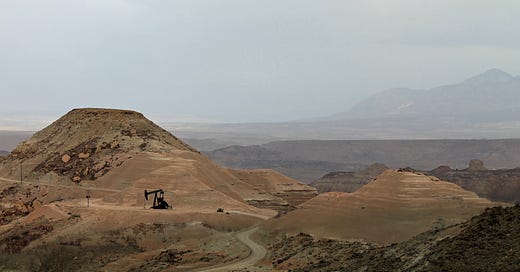History Repeats: The Rattlesnake Field and Aneth oil
A look back as helium development is pushed for Navajo Nation
THE NEWS: Diné land protectors are pushing back against a Navajo Nation Oil & Gas company proposal to drill for helium on the Navajo Nation. I’d encourage you to read Arlyssa Becenti’s reporting in the Arizona Republic to gain a better understanding of what helium’s about and why it’s being opposed.
One potential target for development is the Rattlesnak…
Keep reading with a 7-day free trial
Subscribe to The Land Desk to keep reading this post and get 7 days of free access to the full post archives.



